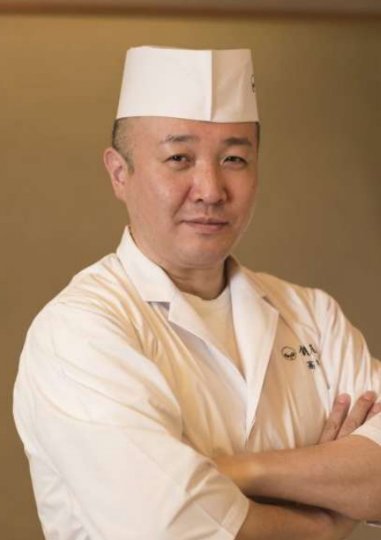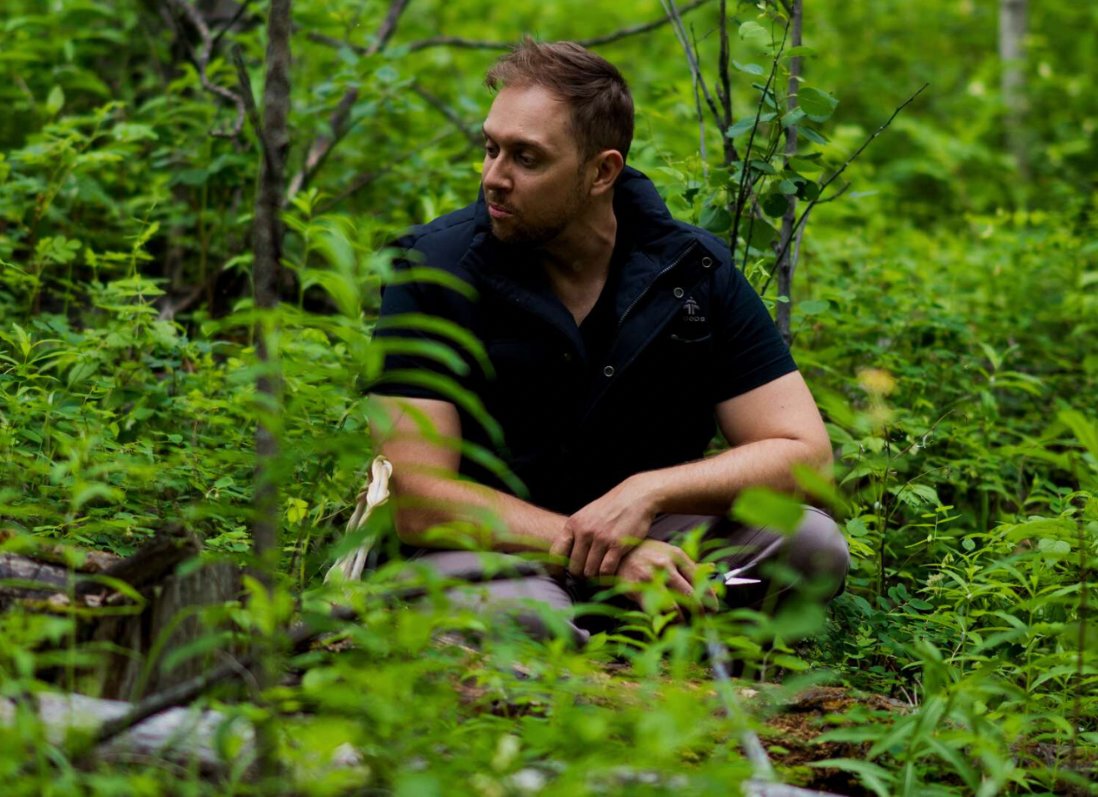Cultural Chef Exchange is a five- week-long programme developed with one of Canada’s most acclaimed chefs, restaurateurs and environmental advocates, Chef Darren MacLean. The exchange seeks to actively promote Canada’s culinary background and cross-cultural character around the globe. Square sponsored Cultural Chef Exchange and powered this mentorship series consisting of five topics, to share techniques, knowledge and discussion of important issues the restaurant industry faces from environmental stewardship to food waste and sustainability from successful chefs and restaurant owners from across the world.
The second year of Chef Darren MacLean’s Cultural Chef Exchange is underway in Calgary, AB, where MacLean recently met with visiting chefs Shin Takagi and Masako Morishita to fish, forage, and discuss the steps entrepreneurs should take when considering how to future proof their operations. Read on to learn more about their conversations, which have been edited for clarity.
Why differentiation is necessary to preserving your business through economic uncertainties
DM: Differentiation in business is so important, especially during economic downturns. When hardships come, you have to find a way for people to experience your brand in more than one way. You can’t stay the same, because what works in the good times people can’t necessarily afford during bad times. To insulate yourself during those dips, you need to differentiate what your brand can offer.
For example, I was approached by a brand to create a restaurant in their hotel, but it didn’t make sense to cannibalize my business by merely duplicating one of them. Instead, I decided that I would have two Japanese restaurants, but one of them would serve no meat, just plant-based foods and fish. That way I can provide two very different experiences — I can stay in my wheelhouse while maintaining the strength of my brand.

Why adaptability is key when it comes to preparing your restaurant for change
ST: Change doesn’t have to be negative. You have to be able to adjust to a new stage of your business and new customers. At my restaurant, Zeniya, our purpose is to make the best meal for each person, and to try new ingredients and new ideas. When someone makes a reservation at Zeniya, our staff asks: “Where do you come from? How long will you be in Japan? What have you eaten so far?” We make an effort to be thoughtful about creating each guest’s meal and experience when they come to dine with us.
DM: I think adaptability is really the hallmark of entrepreneurship. I have a tendency to be reactive in my business, to think “Okay, this isn’t working, let’s try X.” But you can’t try everything instantly, you need to be reflective about whether or not your new brilliant idea can be executed properly. Do I have the financial resources? Do I need to get a Square Loan to deliver this idea? I’m a believer in immediacy of action, but it’s important to think of time as your best friend when you’re working on changing something, but you’re not quite there yet.
The biggest factor to consider when you’re adapting offerings at your restaurant is how the changes will affect your customers. A lot of people want to raise their menu prices to combat today’s soaring food costs, but they worry that by doing that they will alienate their customers. However, I don’t think that really matters if you are enhancing the guest experience. If you blindly increase prices, you might be in trouble, but if you do it in a way that will result in higher guest satisfaction, you’ll be just fine. For instance, you don’t want to start charging $80 for pasta with truffles out of nowhere — you’d charge $35 for pasta with the option of adding 10 grams of truffles for an additional $30. Give your customers the option to choose an upgrade if they like. If they value an enhanced experience they won’t mind spending a few extra dollars.
The importance of diversification for restaurants
DM: It’s so important for restaurants to diversify so they don’t get pigeonholed. A lot of people are familiar with me because of Netflix’ Final Table, so they think “Darren MacLean just does Japanese food.” We had a weird space in the back of my restaurant Nupo, and so we decided to look at how we could turn that into an opportunity to not do another thing that was expected of us. We created an eight-seat fine dining restaurant that specializes in Canadian food. By considering and expressing the cultural mosaic of Canada, we are delivering the unexpected, and we have created a new avenue and new conversations with our client base. And so now they can experience something different from us.
Another way to diversify is to up your branding with merchandise. Sell hats, shirts — things that let people be a part of your business when they aren’t physically there. Let people advertise your business through something you created.
On mitigating food waste to protect your bottom line
DM: Every restaurateur knows that every time you put a carrot peel in the bin, or you throw out an onion, it’s like throwing money right in the garbage. It’s important to engage with your food in a creative manner because this will help you see ways to avoid wasting food. We have a grilled cabbage dish at one of my restaurants and we are always left with the leftover cores. Instead of pitching them, we slice them super thin on a mandolin and make kimchi. It’s phenomenal, really crunchy and delicious. We initially just threw them out, but now we buy 30% less cabbage.
It’s also a great idea to use extra food for staff meals. Get your cooks cooking and being creative and keeping themselves fed. Not only will your team benefit from being able to have a little community within the restaurant, they also don’t have to spend time cooking for themselves when they get home, and they’ll feel like they benefit from the food they’re cooking and that you care about them.
Food waste in restaurants can be a death by a thousand cuts. But it is important to recognize that you can’t save every single scrap, that’s not possible. However, slowly over time, you’ll find it just starts coming naturally to you. You become super creative and your customers, your staff, and most importantly, your bottom line will benefit.
Sustainability, in good times and bad
DM: The whole world runs on resources, and we need to protect the ones we have. Restaurants should aim to run as sustainably as possible, especially during tough economic times. Sustainable products are often local and they will usually be more accessible to you. If your restaurant doesn’t operate sustainably, your ingredients are just going to get more and more expensive. Plus, if you’re operating sustainably during good times and bad, your customers will be more likely to remain loyal to you when they are forced to be more choosy and use a lot of discretion with their disposable income during economic hardship. You can’t expect them to choose to support your business if you offer them a compromised experience when times are tough.
People always ask me how I communicate about sustainability to my customers, but I never worry about it. I worry about using good ingredients and delivering a pleasurable experience. And if you can connect the dots between your customers’ pleasure and sustainability, you’ve got them. When a customer tells me: “That was the best tomato salad I ever had!” I can reply: “That’s because they are from this local farm. They’ve never seen a refrigerator and were gently kissed by the sun for the last three days.”
The Cultural Chef Exchange Experience
MM: I really believe in the power of food. Food connects people through culture, and it’s a great way to get to know someone’s background. This week of Cultural Chef Exchange has been nothing but amazing. Foraging was especially eye-opening for me. I grew up in the city, and live in the city now, so I don’t have a lot of access to nature. As you grow older, there’s not too many chances to do something for the first time, and this was such an exciting experience for me, to fly fish and forage out in nature. I can just pick some greens from the ground and use them to garnish my dishes because they taste so good! I’m so excited to work with these ingredients.
ST: When I started working in restaurants, nobody was talking about this kind of stuff, but now talking about sustainable agriculture isn’t so special, everyone’s doing it. And when we were out foraging and fishing I really felt like I was a part of nature. I don’t have that kind of sense when I’m in the city. It was just an amazing experience, I felt like I was in a different world, on the mountain. It’s nice for a chef not to be in the kitchen or office all day, it’s good to be on a mountain, or in a market.
About the Chefs

Chef Shin Takagi, Japan
Shin Takagi is the chef/proprietor of Zeniya, a kaiseki restaurant in Kanazawa, Japan, that holds two Michelin stars. The menu at the restaurant changes daily based on guest preference and what’s available at the market. Chef Takagi has a masterful talent for cooking, which he combines with well honed practical experience and a sense of true hospitality at heart.

Chef Masako Morishita, USA
Originally from Kobe, Japan, Masako Morishita grew up in her family’s 89-year-old bar and restaurant. Masako spent her childhood helping her family, learning to cook Japanese comfort food from her grandmother and mother—both of whom are chefs. Since Masako’s arrival to the U.S. her goal has always been to introduce Japanese culture through her cooking.

Chef Darren MacLean
One of Canada’s most acclaimed chefs, restaurateurs, and environmental advocates, Chef Darren MacLean was Canada’s sole contender and a finalist on Netflix’s global cooking competition ‘The Final Table.’ MacLean is passionate about sustainability and the food building community. While he regularly participates in events as an educator, speaker and culinary judge in Canada and abroad, he is happiest in his kitchens.
